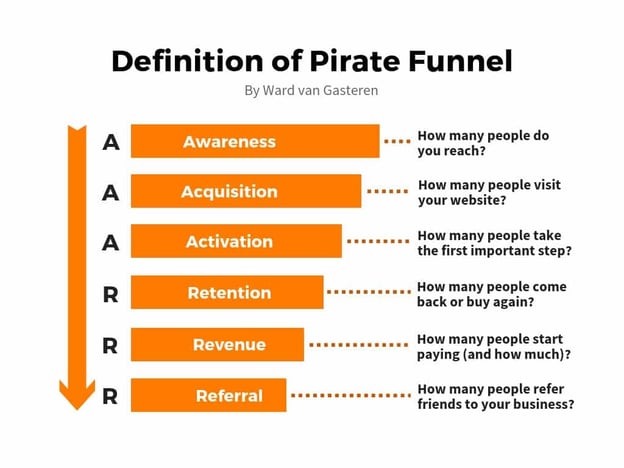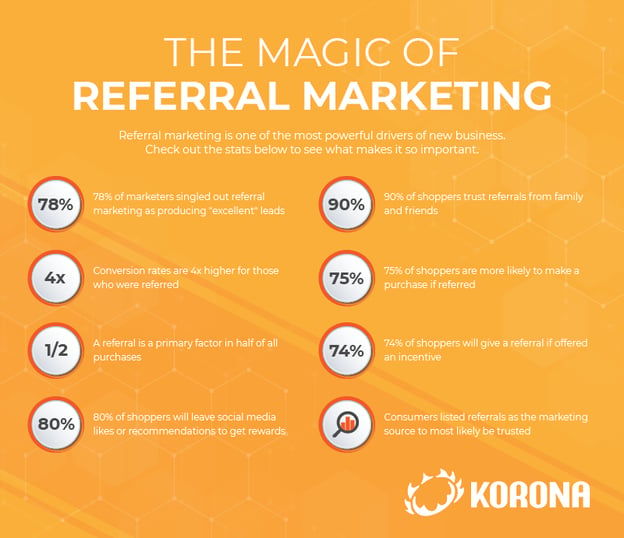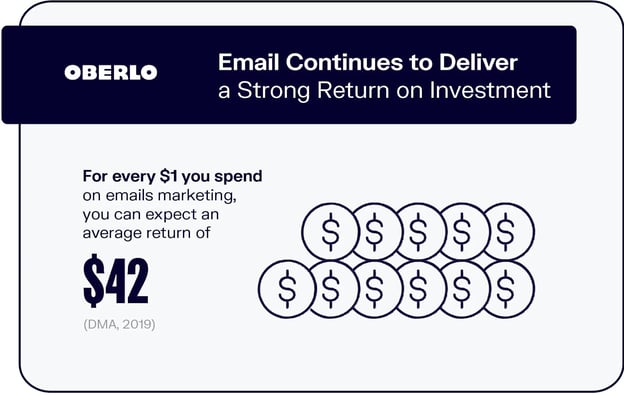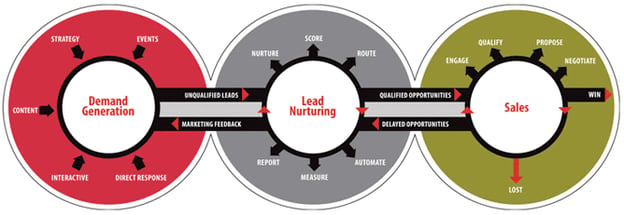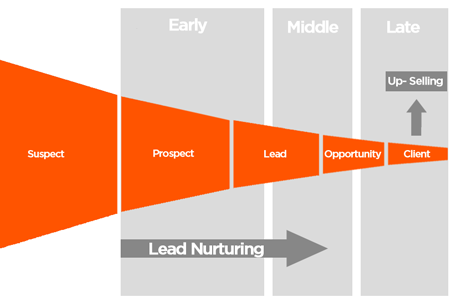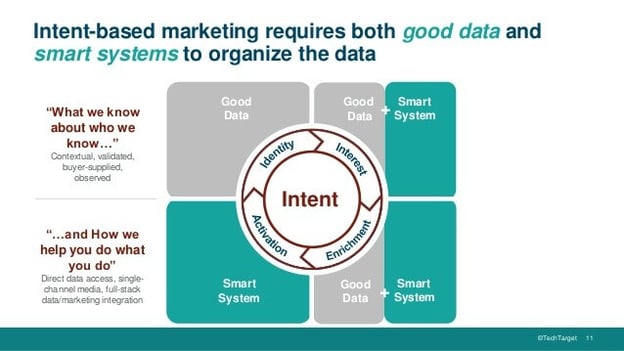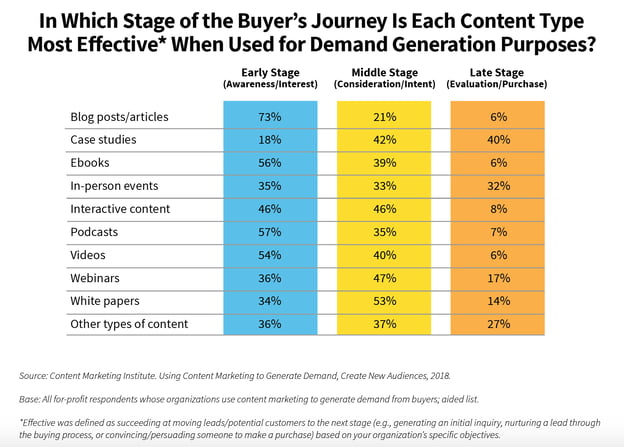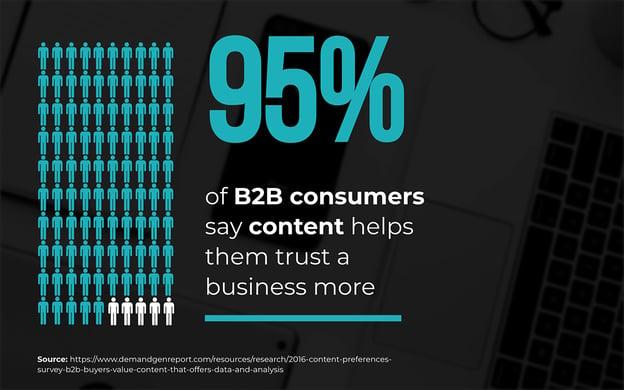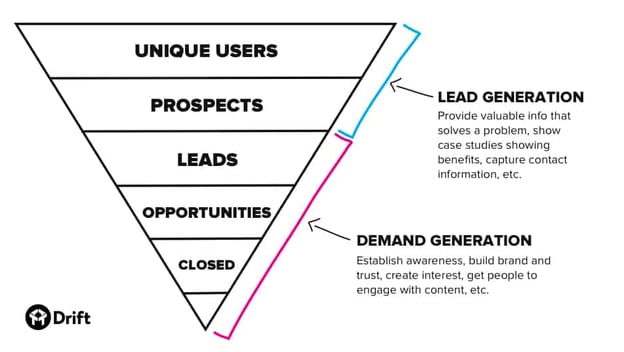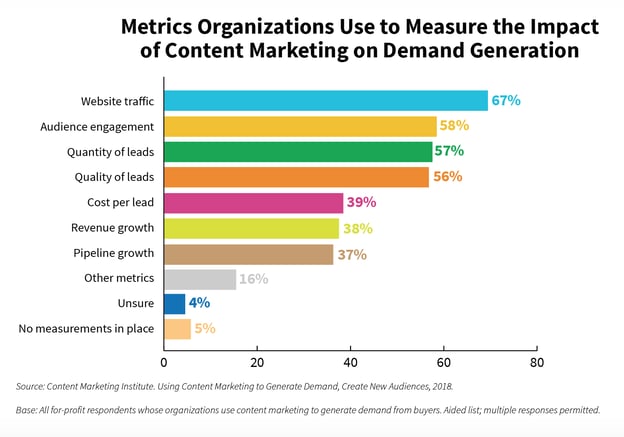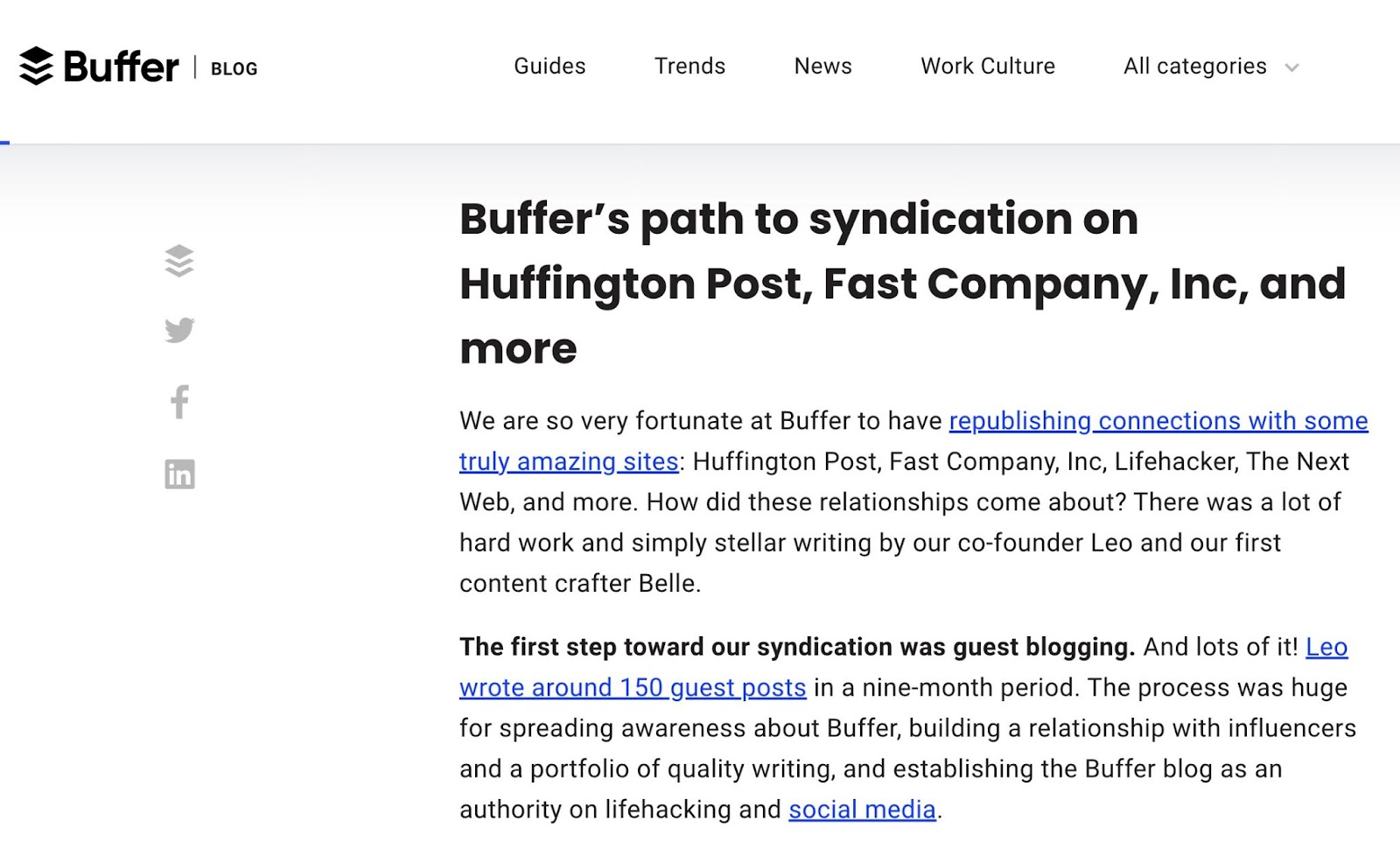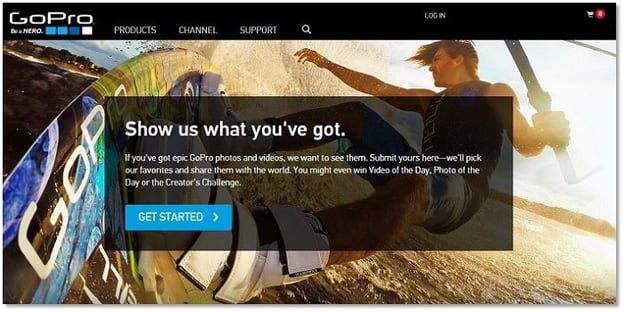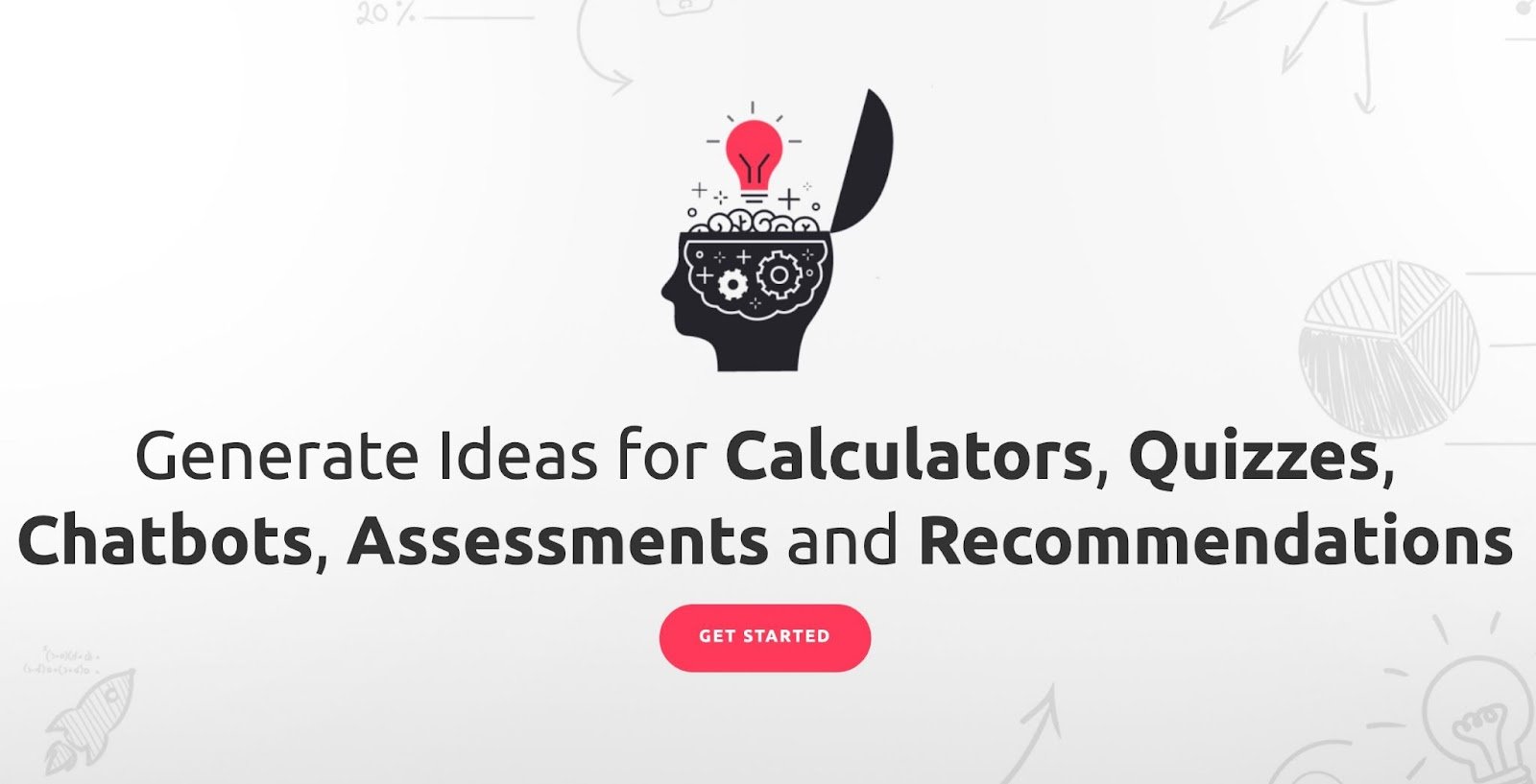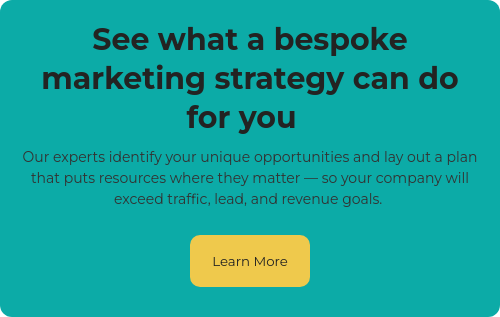You know what they say about opinions, right? Everybody’s got one, and marketers are no different. Many agencies focus on one specialized approach, selling you on the reasons their way is the “right” way. We see it even more lately, with the debate over demand generation vs. growth marketing — two swiftly rising trends in the marketing world. At First Page, we don’t think they’re trends, and we know they aren’t mutually exclusive. Successfully combining demand generation techniques into a growth marketing strategy gives you a holistic marketing methodology that creates end-to-end funnel optimization.
More importantly, both offer avenues to the kind of growth you’ve been dreaming about for your SaaS, fintech, or startup brand. Let’s look a little closer at how these two approaches are different, and how they can work together to make your brand a force to be reckoned with.
First, let's define both terms.
What Is Growth Marketing?
Growth marketing is exactly what the name suggests. It is a comprehensive approach to marketing that utilizes various tactics across numerous channels with the sole focus of achieving and sustaining growth. Growth marketing first developed out of the rising interest in growth hacking — a way of achieving rapid growth through one-off tactics — but has since become a proven methodology that offers a long-term, strategic roadmap to meeting growth-related goals.
Growth marketing leverages the so-called “pirate funnel” (because “AAARRRR”...get it?) to build demand and create loyal, repeat customers — all with the goal of driving traffic, revenue, and other growth metrics.
But rather than focusing only on awareness, acquisition, and activation (as most traditional marketing does), growth marketing places key emphasis on retention, revenue, and referral, so the customers you gain will stick around and tell their friends. Because ultimately, that’s how you achieve long-term, sustainable growth.
What Are Some Business Growth Marketing Tactics?
Pretty much any marketing technique can be used for growth marketing if you approach it in the right way. Growth hacking is one tactic many up-and-coming marketers have used to great effect, but it’s important to remember that growth hacking is a one-off win; not a long-term fix. Growth marketing is a strategic path to growth that leverages a number of tactics, including growth hacking, to achieve new levels of success based on increased leads, traffic, and revenue, for greater ROI. Here are some tested growth marketing tactics that are proven to deliver results.
Leveraging Referral Marketing
What’s better than a happy customer? A happy customer who tells a friend about your brand. What’s better than that? A happy customer who is so happy they broadcast your brand to their entire social network.
Word-of-mouth is as old as marketing itself, and that’s because it works. Remember the key components of referral marketing: incentivize it, make it simple, and spread the word among existing customers.
Growing Your Email List
You’ve heard the rumors. Email marketing is dead. Or is it? Email marketing is the comeback kid of the growth marketing revolution, for good reason.
Not only does it offer some of the strongest ROI of any other marketing tactic, it’s also one of the best ways to organically distribute your content and grow your brand.
However, over time, email lists can decay, so you’ll need to regularly maintain and update your list to maximize impact. Here are some ways to freshen up your list to achieve new growth:
- Send an opt-in email to older subscribers.
- Deliver shareable content your readers will want to forward.
- Segment lists by buyer persona and give each the content they want.
- Extend signups and opt-ins across social media, your website, and other platforms.
Using Landing Pages to Convert Traffic from Your Blog
Landing pages offer a highly effective way to usher leads through the funnel and win conversions.
The key is getting eyes on your landing pages. More than half of all Google searches are considered zero-click these days, so that isn’t enough to get viewers where you need them to be. Instead, leverage your blog as a path to your highest-performing landing pages. Readers are already on the hook (thanks to the killer content your brand is offering), and they’re motivated to learn more.
Building Partnerships with Influencers and Competitors to Tap into Their Audience
We used to think of influencers as out-of-reach celebrities, available only to the biggest brands that could pony up the cash to get them on board. Not so anymore. Influencers come in all industries and at all levels, and they are a proven way to reach new audiences and achieve unprecedented growth.
Today, micro-influencers are all the rage among B2B brands. These may include existing customers and early adopters of your product or outspoken social media leaders in your industry. TikTok is a hotbed for finding influencers that can broadcast your brand to a wide following.
And while it seems counterintuitive to play nice with the competition, it can also drive growth if you build a partnership that is mutually beneficial. You might look at ways to save costs by combining resources or form an alliance to tackle an industry leader together. Or, if you’re a little more altruistic, you could team up with a competitor to raise money for a cause that’s important to your industry and your customers.
A/B Testing
Testing and experimentation is a key component of growth marketing, and A/B testing is a best practice for determining what strategies work and which ones don’t. It’s also an important driver of conversions.
Some tactics you may want to A/B test include:
- Email headlines
- CTA copy or colors
- Landing page versions
- Page navigation
- Lead gen forms
- Social proof elements
Hanging Out Where Your Audience Is
According to Backlinko, social media usage has increased more than 92 percent over the last five years, and chances are, your audience has joined the ranks on the preferred platforms in your industry. For SaaS and other similar companies, there’s a wide range of hot spots where you can connect and engage with your customers. Facebook, LinkedIn, and Instagram are the most popular, and leveraging groups is one of the best ways to get your brand in front of consumers.
In addition to social media, also look at places like Quora and Reddit, where consumers are asking questions about your industry and the types of services and products you offer. This is a great way to get inside the head of your ideal buyer, learn what pain points they experience, and determine what solutions they need to address them.
What Is Demand Generation Marketing?
It’s just another phrase for “lead generation,” right? Not exactly. Demand generation is one of those buzzwords that keep cropping up in marketing circles that no one can fully define. It’s not lead gen. It’s not growth marketing. It’s not inbound marketing.
So what is it?
Advance B2B collected insights on demand marketing from close to two dozen marketers…and got close to two dozen different answers.
One of our favorite definitions comes from Kamli Rextin, a marketing agency manager:
“Demand Generation is a combination of people, process & technology to drive predictable pipeline.”
But our favorite definition of all is the one Advance B2B proposed after compiling all the responses:
“Demand generation refers to any activity that makes your ideal customers aware and interested in your product or service.”
While lead generation is primarily concerned with the awareness stage, demand generation drives interest in the products or services you’re offering and leverages a number of marketing tactics to achieve growth in both areas.
What Are Some Demand Gen Strategies to Grow Your Pipeline?
First off, let’s talk about that pipeline. The pipeline is different from the marketing funnel (no pirates here, sadly) in that it presents a single path to growth that moves from demand generation to lead nurturing to sales.
Demand generation utilizes all the tactics included in most lead gen strategies, but takes it to the next level by then focusing on moving those leads through the pipeline toward the ultimate goal, which is growth, by way of sales.
In comparison to lead generation, demand generation takes more time in the nurturing process, weeding out leads who aren’t qualified and then converting them to customers who can then be upsold on new services or features.
Here are some of the top ways to grow demand for your B2B brand, increase interest, and acquire leads that want to convert.
Leverage Buyer Intent Data to Find In-Market Buyers
The buyer intent path sounds pretty simple: awareness, consideration, decision. But within each of those areas are opportunities to snag (or lose) customers, based on key intent data. Collecting intent data can be done internally or externally and offers you a much deeper understanding of your persona’s wants and needs.
Using intent data to create demand generation systems will help you reach in-market buyers with the right message at the right time…making them much more likely to convert.
Build Authority Through High-Quality and Relevant Content
Content is critical to successful demand generation, but to leverage it for maximum impact, you have to understand where your buyers are in the funnel. Identifying top-of-funnel (TOFU), middle-of-funnel (MOFU), or bottom-of-funnel (BOFU) leads will help you deliver the right content to increase the chance of conversion.
Note that TOFU content overall is more effective in demand generation, but in order to get leads through the funnel, you’ll need to deliver engaging and effective MOFU and BOFU content as well.
Determine Your Acquisition Channels
Not another funnel?! Yep, another funnel. This time, the focus is on how to increase lead acquisition via demand gen, ultimately leading to bigger and better growth for your brand.
Acquisition uses all the traditional lead gen methods, but with a twist. Whereas lead gen is about getting as many leads in the funnel as possible, demand gen focuses on what you do with them once they’re in there.
But just as with lead gen, acquisition is critical to the success of any demand gen campaign. The channels you use may not be different, but the way you move leads through the funnel will be, so carefully consider not just where you’ll find them, but what you’ll do with them and how you’ll nurture them toward conversion.
Give Away Your Best Stuff for Free
We know. Giving out your top-of-the-line content for free makes you go like this:

But it should make you go like this:

High-quality content is key to effective demand generation, and offering it up for free is a trust signal that’s critically important to new leads.
Besides building trust, top-notch content also gives customers a path to refer and spread the word about your brand. And it makes them more likely to part with their personal information, because they know they’re getting something of value in return.
Generate Leads with Clear Conversion Paths
If you don’t know which stage of the funnel your leads are in, you can’t know how to turn them into a conversion.
Demand generation goes above and beyond traditional lead gen by creating authentic interest in your brand, then delivering on promises to persuade them to convert. To do that, however, you have to be providing content that’s relevant to each stage of the funnel, whether it’s TOFU blog posts, MOFU webinars, or BOFU case studies. Understanding what will nurture your leads at each stage is the key differentiator between lead gen and demand gen, and it’s what will turn your leads into conversions and then into repeat customers.
Use Web Analytics to Optimize Your Inbound Strategy
How do you know your demand gen tactics are working? The biggest indicator across the board is website traffic, but that’s not all.
Engagements, lead quality, and cost per lead are also valuable metrics to track to ensure you’re optimizing your demand gen strategy to achieve sustainable growth.
Measure, Optimize...Then Rinse and Repeat
Once you have your strategy and metrics in place, you can find out what works…and then do it all again. Demand gen is a cyclical process and, like growth marketing, it hinges on effective repetition. Keeping a close eye on analytics will help you pinpoint places that need adjustment, so you can track your progress and keep your brand on an upward trajectory toward growth.
How to Build and Measure Successful Demand Generation Campaigns
There are five steps to creating, implementing, and measuring a growth-focused demand generation campaign.
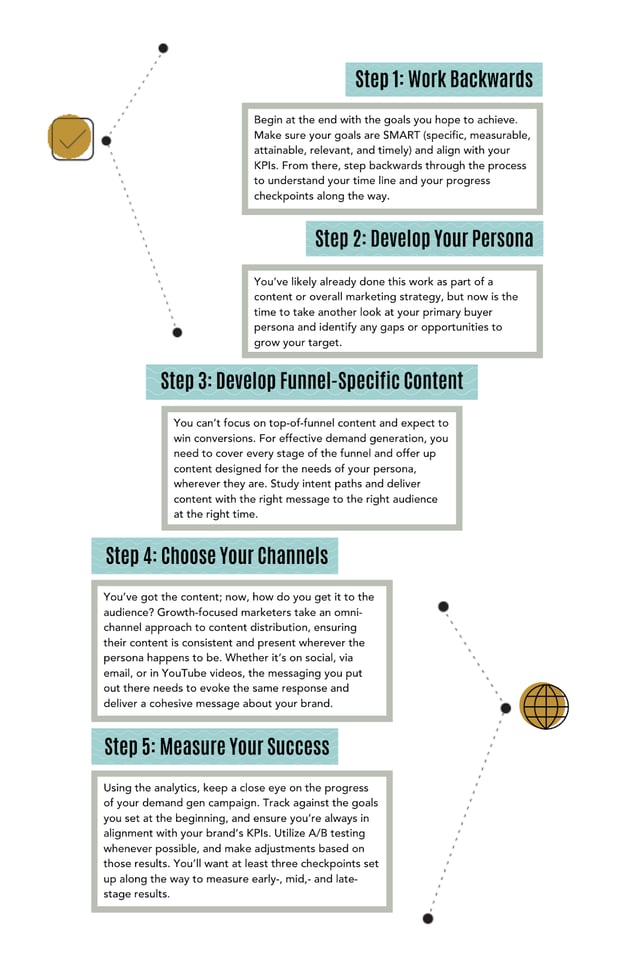
Are There Any Similarities Between Demand Generation and Growth Marketing?
Absolutely. In fact, you could say that demand generation can and should be used as part of a larger growth marketing strategy. Because demand generation is all about growing leads, conversions, and sales, it integrates seamlessly with your growth marketing approach.
Moreover, both demand gen and growth marketing target your ideal customer to bring reliable growth to your brand. Both utilize content and lead magnets to attract consumers and fill your pipeline. And both are data-driven, relying on key metrics to test, adapt, and grow the brand.
What Are the Major Differences Between Growth Marketing vs. Demand Generation?
While both demand generation and growth marketing are current buzzwords in the marketing world, and while both contribute to brand growth, they are not the same animal. Here are the key differences between the two:
Funnel Focus
Demand generation focuses on a more traditional marketing funnel. It explores deeper than lead generation, but still makes most of its efforts in the awareness, acquisition, and activation stages. Growth marketing, on the other hand, makes full use of the pirate funnel, delving into retention, referral, and revenue to create a continuous cycle of growth.
All Growth Is Not Equal
Growth marketing takes a holistic approach, using a variety of tactics to achieve different kinds of growth, including traffic and revenue. Demand generation, however, is more focused on growing revenue by ushering leads through the pipeline. The metrics used by each will be different, as will the ultimate definition of success.
End Objectives
Growth is growth, except sometimes it isn’t. Growth marketers look at big-picture growth across a variety of KPIs and business goals, while demand generation experts are typically focused on the results coming out of their pipeline, which is typically sales and revenue.
Transforming Growth Marketing Through Demand Gen for Holistic Marketing
One single strategy or tactic may move the needle for your brand in the short term, but to achieve long-term, sustainable growth, you need to take a holistic approach. This is why growth marketing and demand gen often go hand in hand. Demand gen is an effective and important part of a larger growth marketing strategy, and when done correctly, it will drive results.
In fact, demand gen can give overall growth marketing a boost due to its reliance on data and measurable results. Want to know how else demand gen and growth marketing play well together?
Content creation and distribution: Demand gen and growth marketing both rely on content that is engaging and shareable across channels to deliver value to the audience.
Repurposed content: You don’t have to create everything from scratch. Both demand gen and growth marketing can utilize existing content by refreshing and updating it to be more relevant to the target audience. As a bonus, this can also lead to a boost in search rankings.
Social proof: Both growth marketing and demand generation rely on social proof. For growth marketers, it drives retention and referrals. For demand gen experts, it acts as a trust signal to bring new leads into the pipeline and keep them moving through it.
Community: While referral marketing is most important to growth marketing, it also aids in demand generation by uncovering new avenues to in-market leads.
5 Examples of Demand Gen and Growth Marketing Working Together
1. HubSpot Grows Thousands of Leads with a Free Tool
Remember when we said to give away your best content for free? HubSpot sets the standard here, offering valuable tools, templates, and resources in exchange for leads. The key is that the information is so worthwhile, leads usually don’t question handing out their personal information to get it. HubSpot knows the pain points of its audience (in this case, creating attractive infographics quickly and cost-effectively), and it delivers solutions that work.
2. Buffer Acquires 100,000 Customers Through Guest Blogging
This is the ultimate pairing of growth marketing and demand generation. Social media scheduler Buffer achieved these results in just nine months by syndicating content across a variety of outlets with large, relevant followings.
3. GoPro Creates Demand with User-Generated Content
Can’t find or afford mega-influencers? Turn to your customers. That’s what GoPro did when they wanted to increase interest and grow leads and sales. Around 6,000 GoPro videos are posted online each day, so the brand went straight to the source and asked users to share their videos to be used in marketing and promotional materials.
4. Neil Patel Gets Personal on Instagram
Marketing guru Neil Patel is known for his insights on both demand generation and growth marketing (and literally every other form of marketing). He has a strong social presence with an engaged audience, but his posts go beyond shoptalk. In fact, his Instagram account includes dozens of branded posts promoting his blog, webinars, and other marketing content, but among his most popular posts is this one — a Father’s Day post of Patel snuggling his newborn.
Adorable? Yes. Effective? Also yes. The post has more comments than nearly any other and gives his audience — who are likely following him for industry insights — the ability to connect on a more personal level.
5. Outgrow Sparks Demand Gen Ideas with a Free Tool
Outgrow is known for its exciting and interesting demand gen resources, like quizzes, calculators, chatbots, and more. And to gain more customer interest (and a lot of new leads), they also provide an idea generator to help potential customers spark inspiration and create demand gen assets of their own.
Are There Any Marketing Agencies That Specialize in Both Growth Marketing and Demand Generation?
We’re glad you asked, because the answer is a resounding yes! In fact, at First Page, we are a growth marketing agency that specializes in demand gen and uses this and other tactics to help your brand achieve long-term growth that is measurable and sustainable. Read our case studies to find out how we do it, and check out our blog to see our growth marketing philosophy and how we can move the needle consistently for your brand.
Conclusion: Growth Marketing vs. Demand Generation: Which Is Right for You?
You don’t have to pick and choose a couple marketing strategies that may or may not work. When you find the right growth marketing agency, they will understand the importance of demand generation and work to build a strategy that incorporates a variety of tactics focused on growth.
When and how you use those tactics depends on a lot of factors. Broadly speaking, growth marketing is used more often for tech startups and newer businesses, while demand generation is often employed for established brands with a ready audience. However, both can be used for any brand and any level, to great effect.
The key is finding a growth marketing agency that understands demand generation and how to put it to work for your brand.
Frequently Asked Questions About Growth Marketing
Is growth marketing the same as demand generation?
It is not. Growth marketing is a methodology that uses end-to-end funnel optimization to achieve long-term growth in numerous areas, like traffic, revenue and ROI. Demand generation is a tactical approach to increasing sales by moving leads through the demand pipeline.
How does demand generation work with product marketing?
Though they haven’t always played well together, product marketing and demand generation, when done well, complement each other and lead to accelerated growth. Product marketing traditionally focuses on using quantitative data to take a qualitative approach to crafting buyer personas, and identifying and addressing pain points. Demand gen promotes messaging that increases awareness and interest to drive conversions. Both are necessary to achieving long-term, sustainable growth.
What does a demand generation marketer do?
Demand gen marketers often work more closely with sales teams than other marketers do. They focus on filling the sales pipeline with the most qualified leads to support sales efforts to close deals and retain loyal customers.
How can you increase demand?
Increasing demand begins with boosting awareness of a product or service. The next stage is increasing interest, so customers familiar with the brand want to learn more about what it offers, and why they might need it. Demand generation typically takes place near the top of the funnel, and is a more aggressive approach than lead generation or product marketing.
What makes a good demand generation manager?
A stellar demand generation manager must be well-versed in both inbound and outbound marketing, and must understand how to leverage both to increase awareness and raise interest around a brand’s products or services. They are generally well-acquainted with multiple marketing channels, including SEO, social media, email and PPC. They frequently have experience with marketing automation, a good grasp of CRM, and a close alignment with sales strategy.


